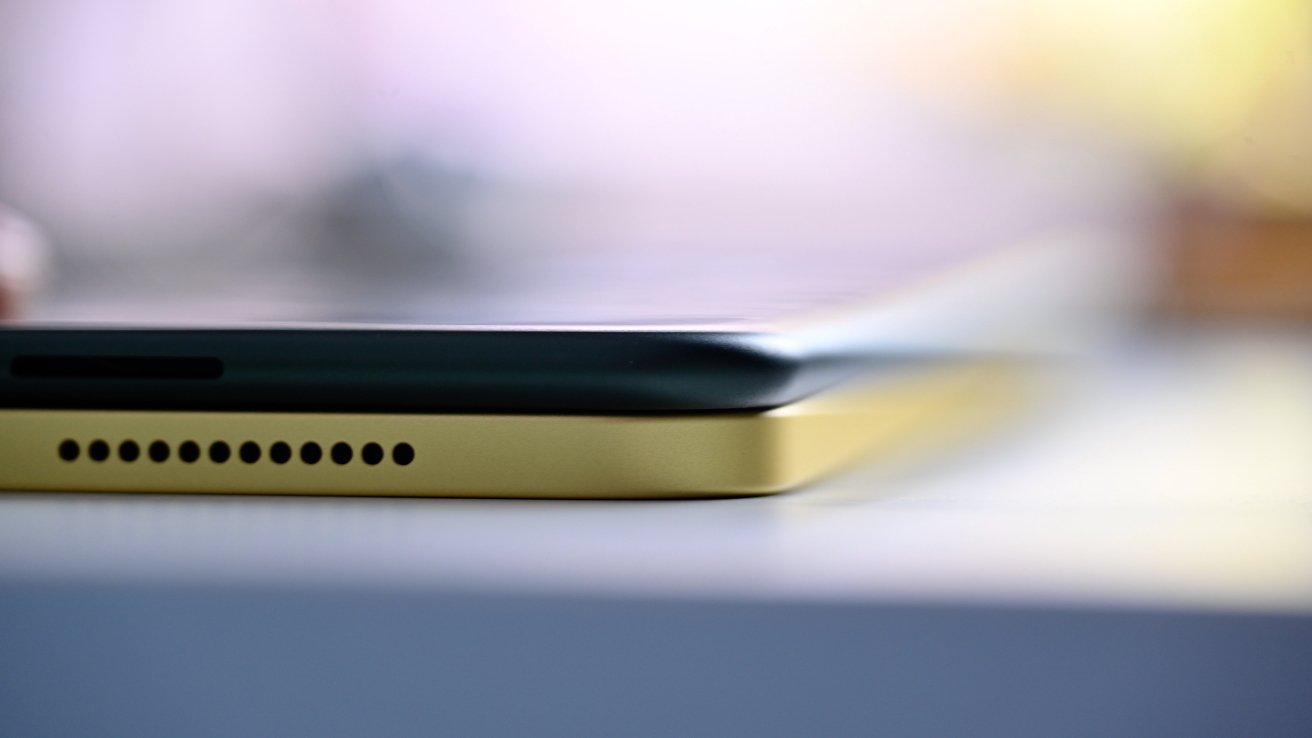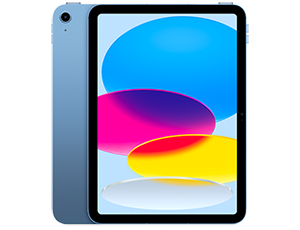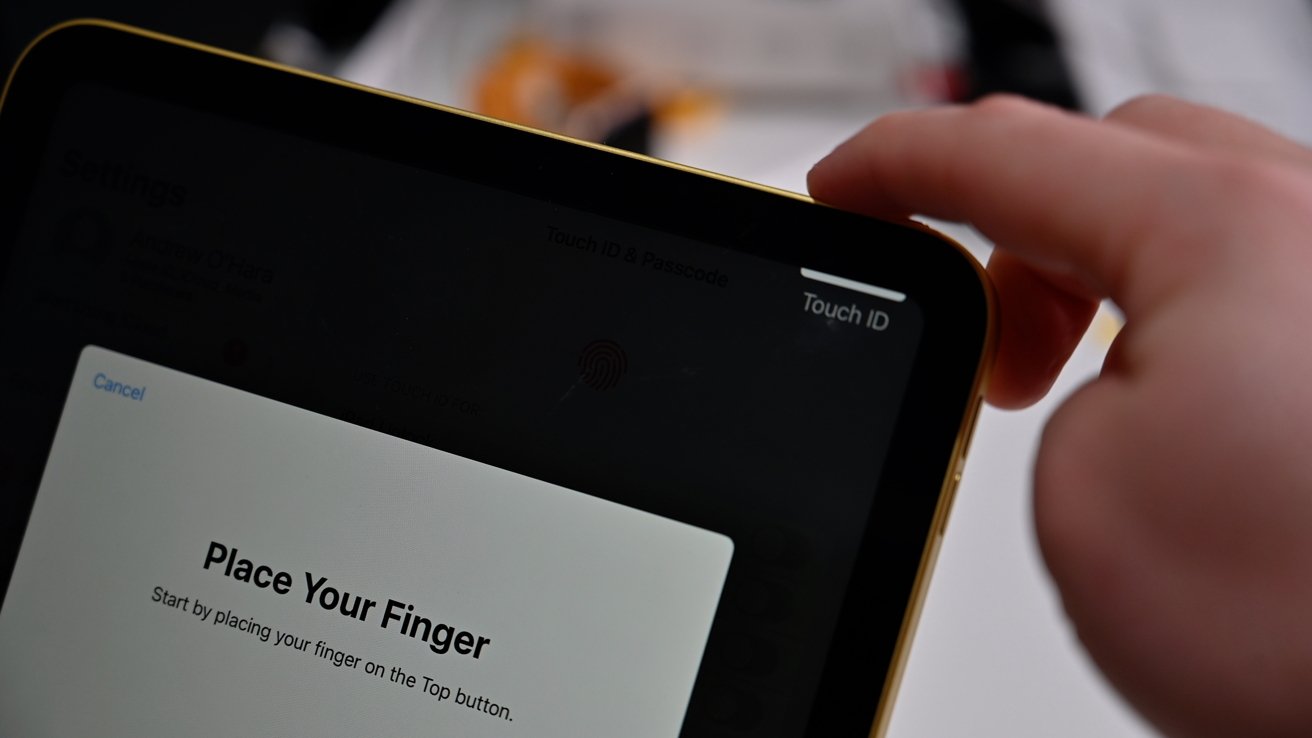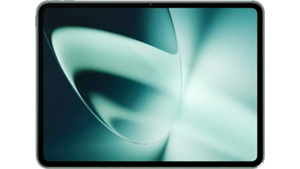The first tablet from smartphone producer OnePlus directly takes on the tenth-gen iPad, in what could be a compelling Android alternative to Apple's tablet.
OnePlus has gained a reputation for creating good-quality Android smartphones, such as the OnePlus 10 Pro. With its design and hardware knowledge, the company has now turned to a slightly bigger device.
The OnePlus Pad is the manufacturer's first attempt at a tablet, and it appears to be impressive in many different ways. From the high-quality screen to the hefty battery life, the tablet offers a lot to users.
At its price of $479, the closest iPad model you can purchase for similar money is the tenth-gen iPad. Here's how the two tablets stack up against each other.
OnePlus Pad vs iPad 10 - Specifications
| Specifications | Apple 10th-gen iPad | OnePlus Pad |
|---|---|---|
| Price (starting) | $449.00 Check prices | $479 Buy at OnePlus |
| Dimensions (inches) | 9.79 x 7.07 x 0.28 | 10.15 x 7.44 x 0.26 |
| Weight (pounds) | 1.05 | 1.22 |
| Display size (inches) | 10.9 | 11.61 |
| Display type | Liquid Retina | LCD |
| Resolution | 2360 x 1640 | 2800 x 2000 |
| Pixel density | 264 | 296 |
| Processor | A14 Bionic | MediaTek Dimensity 9000 with ARM G710 MC10 GPU |
| Rear camera (megapixels) | 12MP Wide | 13MP |
| Front camera (megapixels) | Landscape 12MP Ultra Wide Center Stage | 8MP |
| Storage | 64GB, 256GB | 128GB |
| Connectivity | Wi-Fi 6, 5G, Bluetooth 5.2 | Wi-Fi 6, Bluetooth 5.3 |
| Ports | USB-C | USB-C |
OnePlus Pad vs iPad 10 - Physical Features
The tenth-gen iPad was a marked departure from the ninth-gen model's well-established design, in that the Home button disappeared in favor of an edge-to-edge appearance, like the iPad Pro models. The front camera also shifted so it was on the long edge, and intended to be used in landscape orientation, rather than the portrait-focused top edge.
It's hard not to see many echoes of the iPad 10's design in the OnePlus Pad. Like the iPad, it has a large display with rounded corners and a reasonably small bezel, all housed in an aluminum unibody design. The placement of the front camera also mimics Apple.
Around the back, OnePlus goes its own route with the camera, which is a large circular bump in the middle of one long side, rather than Apple's smaller corner version.
In terms of size, OnePlus is the larger tablet at 10.15 inches long by 7.44 inches wide, versus 9.79 inches by 7.07 inches for the iPad. Since the two tablets use different-sized screens, with OnePlus being slightly bigger in the display, this difference makes sense.
OnePlus does wins on thickness, though, at 0.26 inches to 0.28 for the iPad.
OnePlus Pad vs iPad 10 - Display
Apple's iPad 10 uses a 10.9-inch IPS Liquid Retina display, which offers sRGB color support, 500 nits of brightness, True Tone, and an oleophobic coating to ward off fingerprints.
The OnePlus display differs in that it is an 11.61-inch LCD screen. That panel offers 500 nits of brightness, as well as 10-bit True-Color, a 144Hz maximum refresh rate that trounces the 60Hz of the iPad, and a contrast ratio of 1,400:1.
Unusually OnePlus has opted for a 7:5 display rather than the more typical 4:3, as Apple went for.
The resolution is much higher for OnePlus at 2,800 by 2,000 against 2,360 by 1,640 for the iPad. Though a larger screen would normally result in a higher resolution than a smaller one, OnePlus knocked it out of the ballpark here with a pixel density of 296 pixels per inch, against 264 for Apple.
The OnePlus Pad is bigger and with a more pixel-dense display.
OnePlus Pad vs iPad 10 - Processing and Performance
Apple uses an A14 Bionic chip in the tenth-gen iPad, which sports a 6-core CPU, 4-core graphics, and a 16-core Neural Engine. That's paired with 4GB of LPDDR4X SDRAM memory.
OnePlus relies on the MediaTek Dimensity 9000 as the CPU, with an ARM Mali-G710 MC10 GPU. The CPU uses one 3.05GHz Cortex-X2 "Ultra-Core," along with three 2.85GHz Cortex-A710 "Super Cores" and four Cortex-A510 "Efficiency Cores."
On the memory side, there's 8GB of LPDDR5 in use by OnePlus, which claims can help keep up to 18 apps running in the background.
OnePlus also boasts machine learning elements in the form of the Dynamic Computing Engine, which "enhances the core fast and smooth experience" using "smart AI algorithms" to "streamline your digital life." Suffice it to say, this can be read as the same sort of stuff that Apple does with the Neural Engine for some tasks.
In our testing via Geekbench 6, the iPad managed 2009 and 4473 on the single and multi-core tests respectively. The OnePlus Pad only garnered 1259 and 3199, comparatively.
That gives the iPad a 40% edge over the OnePlus Pad. In use though, both tablets were exceptionally responsive and fluid.
OnePlus Pad vs iPad 10 - Cameras and Biometrics
Despite the changes in design, Apple retained Touch ID in its iPad, rather than moving to Face ID. There's no Home button, but resting a finger on the top button will do the same job.
OnePlus opts for a "face unlock" system, utilizing its 8-megapixel front-facing camera. Much like other face unlock systems, this isn't one that relies on a 3D depth mapping system like Face ID, so the security of the feature may not necessarily be that good in the long term.
For cameras, Apple uses a 12-megapixel Wide camera with a 5x digital zoom, which is also capable of 4K video recording up to 60fps, 1080p slo-mo video at 240fps, and a plethora of shooting modes for both stills and video.
At the front is the 12-megapixel Ultra Wide camera, which can handle 1080p 60fps video with cinematic video stabilization.
OnePlus uses a 13-megapixel camera at the back with a much larger camera bump than Apple. That camera can record 4K video at 30fps, with video zooming available and EIS stabilization.
The front 8-megapixel camera can deal with 1080p 30fps video, albeit without video zooming, but it does have EIS stabilization.
Where Apple's front camera has Center Stage for video calls in FaceTime, OnePlus has its version that it calls Limelight.
OnePlus Pad vs iPad 10 - Connectivity
The OnePlus Pad has Wi-Fi 6 support, which matches the iPad. However, it does pull a little ahead in Bluetooth, by using Bluetooth 5.3 against the iPad's Bluetooth 5.2.
Where Apple majorly differs is in that it offers cellular connectivity for the iPad, which OnePlus simply doesn't in its Pad.
There are a lot of in-ecosystem similarities, namely how the devices connect and work with others in the same product family. Just as you can do some things that shift between the iPhone and iPad, like Continuity, you have some similar features when using the OnePlus Pad with a OnePlus phone.
For example, while you don't have cellular in the OnePlus Pad, you can use Cellular Data Sharing to use the 5G of a nearby smartphone. This is very similar in concept to Apple's Instant Hotspot feature.
Likewise, Auto Connect allows OnePlus Pad to connect easily to other devices. Again, a lot of this is done by Apple too. Then there's the inter-device syncing of text messages, images, and videos, which Apple does as well.
Physical connectivity is led on both sides by USB-C connections, though there are some similarities in how other devices can connect.
The iPad has a Smart Connector on one side, which is employed by keyboard accessories for a data connection and power, rather than relying on Bluetooth.
You can connect the OnePlus Magnetic Keyboard to the side of the OnePlus Pad, which also sports a similar triple-contact system.
Rounding out connectivity is the stylus situation, which is best described as echoing the Apple experience.
OnePlus has the Stylo, an implement that offers 4,096 levels of pressure sensitivity. It attaches magnetically to the side of the OnePlus Pad, which lets it be used for recharging and pairing, just like the second-gen Apple Pencil.
However, the iPad still uses the first-gen Apple Pencil (on sale at Amazon), which requires a cable to recharge since it's got a Lightning plug but the iPad uses USB-C.
OnePlus Pad vs iPad 10 - Audio
One area that OnePlus certainly pulls ahead in is audio, as it uses a quartet of speakers spaced out into each corner to provide stereo sound. OnePlus characterizes this as "Omnibearing Sound Field technology," which sounds fancy but doesn't really mean much.
This is somewhat reminiscent of the iPad Pro speaker setup, where Apple includes four speakers that switch channels to enable stereo sound regardless of how the tablet is held.
However, the iPad has speakers in the base, and that's it. Unlike the iPad Pro, the iPad can't perform the same stereo trick.
Neither tablet uses a headphone jack, so you're stuck either using USB-C or Bluetooth for personal audio.
OnePlus Pad vs iPad 10 - Power
Apple says its iPad has a 10-hour battery life from its 28.6-watt-hour battery when used for web surfing or watching video on Wi-Fi. If using a mobile network on a cellular model, this figure dips down to 9 hours of web surfing.
The OnePlus Pad boasts a 9,510mAh battery, which can last for 12.4 hours of video playback. OnePlus also claims the Pad can manage up to a month of standby time, though this is a fairly odd statistic to market with.
Recharging the iPad is handled by an included 20W charger. Meanwhile, OnePlus uses a 67W "SuperVOOC" charger, which can fully recharge the OnePlus Pad in "just over 60 minutes."
OnePlus Pad vs iPad 10 - Storage and color
Apple offers the iPad in a choice of two storage capacities, namely 64GB or 256GB.
At launch, OnePlus will only provide one capacity option, and at 128GB, that's right in the middle of Apple's tiers.
Apple also provides more options in color, with Silver, Blue, Pink, and Yellow available to purchase.
OnePlus only sells the Pad in Halo Green.
OnePlus Pad vs iPad 10 - Pricing
Apple sells the tenth-gen iPad at $449 for the 64GB capacity and $559 for the 256GB version. If you want cellular, the prices rise to $599 and $749 respectively. However, the tablets are regularly on sale in the AppleInsider iPad 10th Generation Price Guide.
OnePlus only sells one variant of the OnePlus Pad, and it costs $479.
On the accessory side, the OnePlus Magnetic Keyboard is $149, the Stylo is $99, and the Folio Case is $39.
Apple sells the first-gen Apple Pencil for $99, while the Magic Keyboard Folio for iPad is $249.
An iPad vs an "iPad"
Let us address the elephant in the room. There are many elements of the OnePlus Pad that come from the Apple playbook, especially when looking at the tenth-gen iPad.
Looking front-on, with its new front camera orientation and general styling, there's more than a hint of iPad coming from the OnePlus Pad. The stylus magnetically attaching is certainly inspired by the second-gen Apple Pencil and the iPad Pro, and something that the iPad could've offered, but doesn't.
Sure, there are many bits you can look at that are not Apple-like, such as the larger centrally-placed rear camera bump. But ultimately, there's a lot of Apple inspiration on show here.
Indeed, in terms of specifications, OnePlus has a lot to cheer about. The power situation with the high-wattage charger and the longer battery life is commendable.
Even the display is something worthwhile, going for a much higher resolution than what Apple offers.
There's a lot here to like about the OnePlus Pad, from its more than adequate performance to its battery life, and even its pricing. As an Android tablet, it's one that could easily be recommended because it ticks so many boxes for users.
If only it didn't try so hard to be an Apple product and become more of its own thing.
Where to buy the OnePlus Pad & iPad 10th Generation
The OnePlus Pad sells for $479 direct from OnePlus.com.
On the Apple side, the iPad 10th Generation starts at $449, but iPad deals are regularly available to drive prices down (often to under $400). You can find the latest offers in our iPad 10th Generation Price Guide.
 Malcolm Owen
Malcolm Owen





















-m.jpg)







 William Gallagher
William Gallagher
 Thomas Sibilly
Thomas Sibilly
 Wesley Hilliard
Wesley Hilliard
 Marko Zivkovic
Marko Zivkovic












3 Comments
What’s the current situation on Android tablet apps? Have they moved beyond just being blown-up phone apps? Are first class app titles from Microsoft, Adobe, Affinity, Agilebits, etc., available for Android tablets?
I am trying not to dismiss Android tablets out of hand, I’m just expecting that every non-Apple tablet that gets compared to the iPad should be seriously measured against those key elements of the Apple software ecosystem that are surfaced through the iPad.